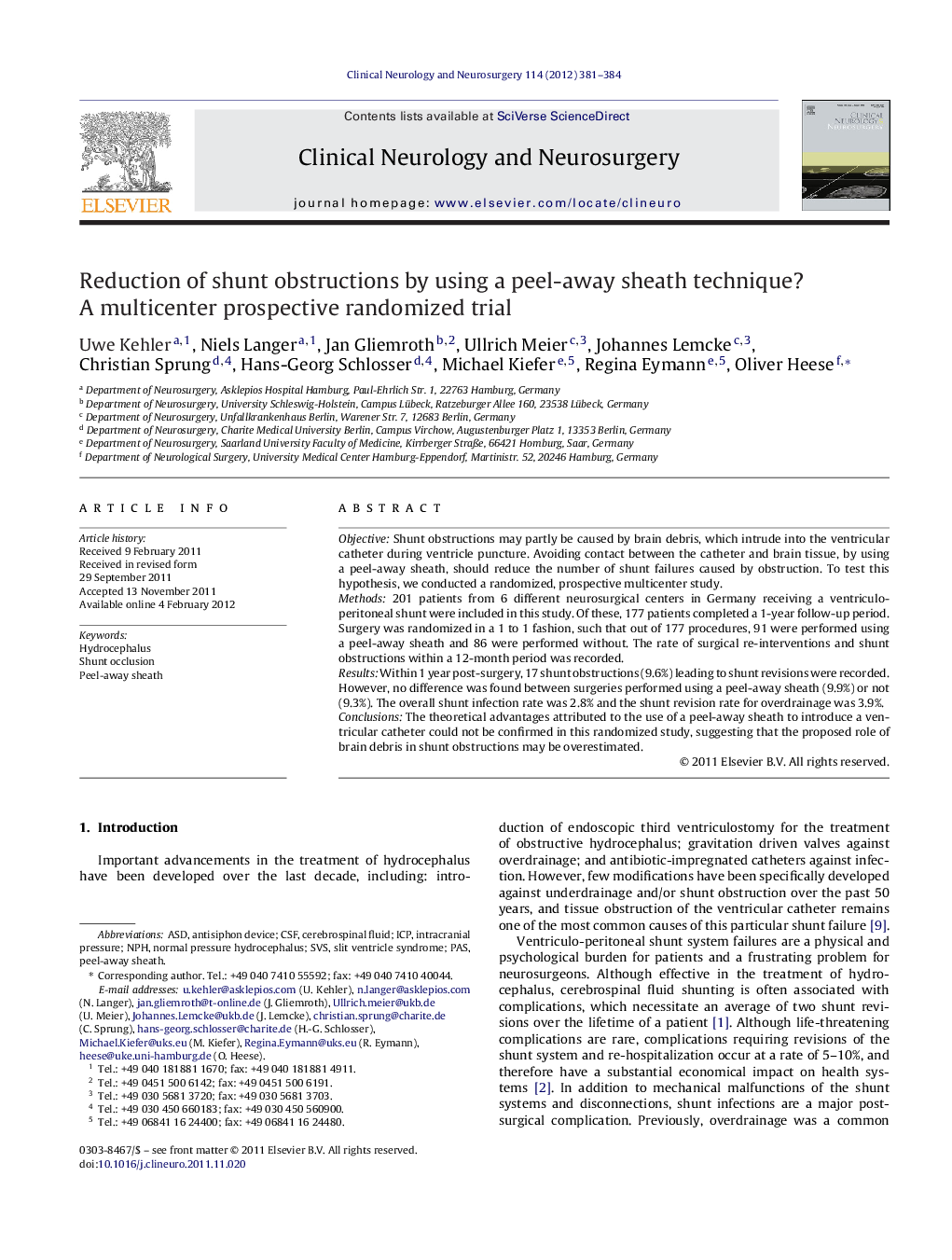| Article ID | Journal | Published Year | Pages | File Type |
|---|---|---|---|---|
| 3041118 | Clinical Neurology and Neurosurgery | 2012 | 4 Pages |
ObjectiveShunt obstructions may partly be caused by brain debris, which intrude into the ventricular catheter during ventricle puncture. Avoiding contact between the catheter and brain tissue, by using a peel-away sheath, should reduce the number of shunt failures caused by obstruction. To test this hypothesis, we conducted a randomized, prospective multicenter study.Methods201 patients from 6 different neurosurgical centers in Germany receiving a ventriculo-peritoneal shunt were included in this study. Of these, 177 patients completed a 1-year follow-up period. Surgery was randomized in a 1 to 1 fashion, such that out of 177 procedures, 91 were performed using a peel-away sheath and 86 were performed without. The rate of surgical re-interventions and shunt obstructions within a 12-month period was recorded.ResultsWithin 1 year post-surgery, 17 shunt obstructions (9.6%) leading to shunt revisions were recorded. However, no difference was found between surgeries performed using a peel-away sheath (9.9%) or not (9.3%). The overall shunt infection rate was 2.8% and the shunt revision rate for overdrainage was 3.9%.ConclusionsThe theoretical advantages attributed to the use of a peel-away sheath to introduce a ventricular catheter could not be confirmed in this randomized study, suggesting that the proposed role of brain debris in shunt obstructions may be overestimated.
